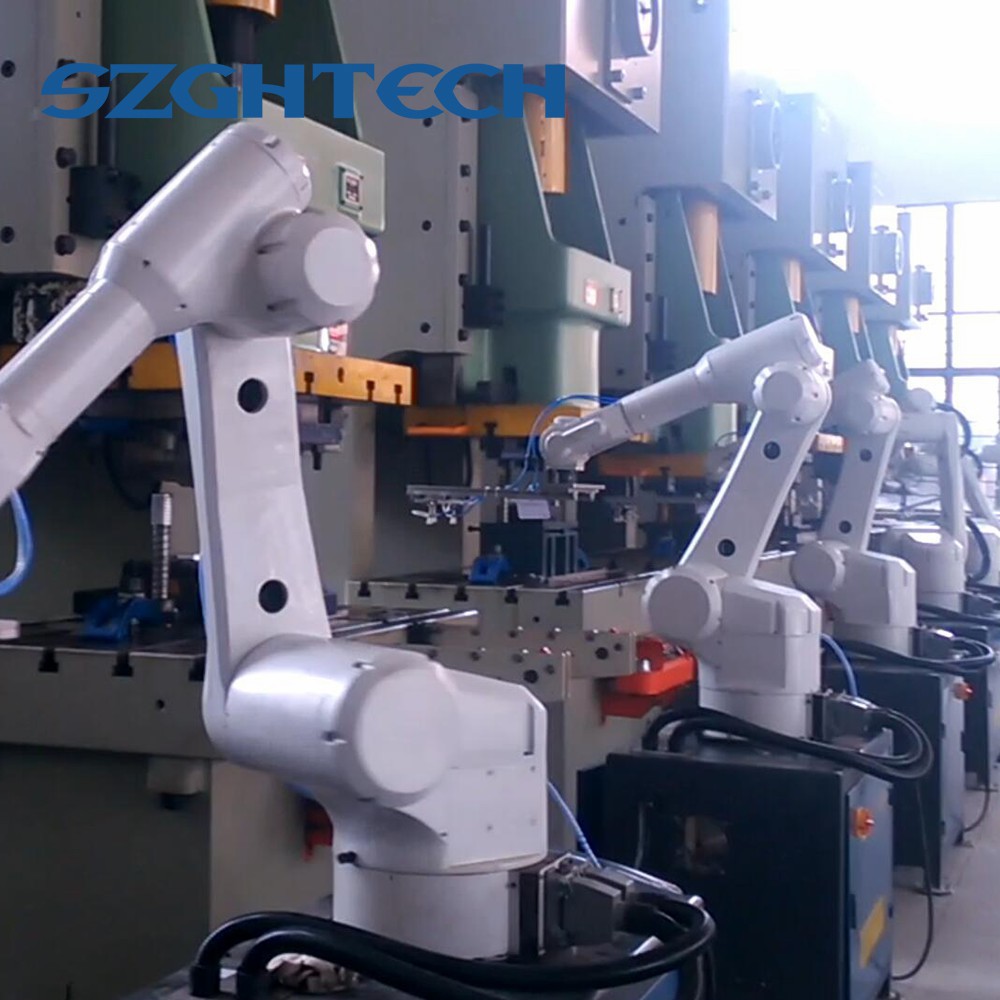Robots can work together on a production line through various methods of coordination and collaboration, depending on the specific tasks and requirements of the production process. Here are some common ways in which robots can work together on a production line:
1)Sequential task assignment: Robots can work in a sequential manner, where each robot performs a specific task in a predefined sequence. For example, one robot may perform a pick-and-place operation to transfer a component from one location to another, and then another robot may perform an assembly operation on that component. This sequential task assignment can be coordinated through a central control system that assigns tasks to different robots based on their capabilities and availability.
2)Parallel task assignment: Robots can also work in parallel, where multiple robots perform different tasks simultaneously. For example, one robot may be assembling a component while another robot is packaging finished products. Parallel task assignment can be used to increase productivity and reduce cycle times, especially for repetitive and time-sensitive tasks.
3)Cooperative task assignment: Robots can collaborate and work together on a task that requires coordinated effort. For example, two robots may work together to lift and position a heavy object, or one robot may hold an object while another robot performs an operation on it. Cooperative task assignment requires close coordination and communication between robots, often facilitated by sensors, vision systems, or a central control system.
4)Task sharing and handover: Robots can share tasks and hand over work to each other based on their capabilities and availability. For example, if one robot completes a task but is not capable of performing the next task, it can hand over the work to another robot that is better suited for the next task. 5)5)This allows for efficient utilization of robot capabilities and resources.
Sensing and feedback: Robots can use sensors and feedback mechanisms to monitor and adjust their actions in response to changing conditions. For example, robots can use vision systems to detect the position and orientation of objects, force sensors to measure contact forces, or proximity sensors to detect the presence of other robots or objects. This enables robots to adapt their actions and avoid collisions, perform precise movements, and maintain safe and efficient operations.
6)Centralized control or distributed control: Robots can be controlled centrally by a master controller that coordinates their actions, or they can have distributed control with each robot making autonomous decisions based on local information. Centralized control allows for coordinated and synchronized movements, while distributed control can provide flexibility and adaptability to changing conditions.
7)Communication and coordination protocols: Robots can communicate and coordinate with each other using various protocols, such as wired or wireless communication, standard industrial protocols (e.g., Ethernet/IP, Modbus), or custom protocols. This allows robots to exchange information, share tasks, and coordinate their actions in real-time.

These are some of the ways in which robots can work together on a production line. The specific approach used will depend on the requirements of the production process, the capabilities of the robots, and the overall system design. Proper coordination and collaboration among robots can lead to increased productivity, improved efficiency, and enhanced flexibility in the manufacturing process.

